Jane Kim: Mastering Arts and Science
When a close friend recommended visiting Art.com for relevant new art, I came across the brilliant work of artist and science illustrator Jane Kim. Known for her Migrating Murals Project, this intrepid artist took a fervent love for animals and cultivated it into a talent and environmental cause that captivates everyone who encounters it. With the help of San Francisco Bay area photographer, Kelly Hsiao, I was able to ask Jane a few questions and showcase some of her latest work.
Regarding the Migrating Mural Series and your paintings of the rare Sierra Mountain Bighorn Sheep, it was fascinating looking at the places where youíve been doing your murals. These are really rural areas. What was the human reaction when you painted in some of these small towns? In general, it was really positive. When people saw me they would stop and say hello and ask what I was doing. It’s not something typical; I think that was very exciting for people to see. They were curious, for sure. Youíre right in picking up on that small town culture where they donít like big city people coming in and doing things that disrupt. There’s a long standing contention between LA and Owens Valley, a big water issue. The department of water and power owns most of the land in that region, so there are very few privately owned places. Theyíve dried up the lake and there’s so much baggage around that. Given that it was specifically about an animal that lives in their hometown and that people do care about nature and wildlife in that area, this project did not seem like a threat.
NB: When you talked about the bighorn sheep I imagine the locals really shined to your awareness of an animal that was very local to them. It was surprising that so many people who lived there didnít know (A) that bighorn sheep were in the Sierra Nevada range or (B) that there was a difference between the Sierra Nevada bighorn sheep and the desert bighorn. A woman who lived in Independence, California—she must have been in her 60ís or 70ís—she called the bighorn sheep foundation and said, ìI found the mural and read the newspaper. I lived here my whole life and never knew there were bighorn sheep in the Sierra Nevadas.” Thatís really exciting and shows that putting an animal out there in the forefront through public art is definitely a way to raise awareness. It felt really good to get that awareness and conversation going.
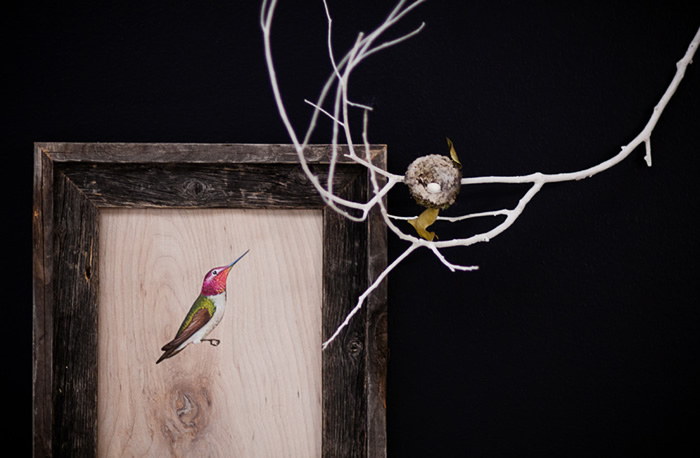
I love how the email you sent me had your signature listed as: Jane Kim Artist | Science Illustrator. Pretend you’re tasked with rendering a poison dart frog. What are your concerns as an artist versus a science illustrator? As an artist it’s so much more just a visual experience. I want the composition to be interesting. Iím looking at the animal thinking, Give it personality. I want people to connect with it and find it beautiful, to fall in love with the animal. I want more of an emotional, visceral response. As a science Illustrator I would think to myself, ACCURACY! ACCURACY! ACCURACY! Not just photo-realism but I’d ask myself, How many spots does this frog have? Are there a number of spots that is typical for this species? The length of its toes, its shape, the bone structure… I would refer to a biologist and ask, “What are the defining characteristics of this animal?” All of these things Iím starting to pay attention to. It’s more about taxonomy and finding the ideal version of it. I might look at the animal in question and not use it exactly. Iím perfecting the animal —slightly more than it would be in real life. Youíre guiding the viewer in understanding what theyíre looking at. Sometimes you may need to simplify it. When you start to break it down to some essential qualities thatís when it starts making sense. In scientific illustration thatís what you’re definitely thinking about.
My challenge when I start to bring what I would call art with science illustration: Iím always trying to bridge making the animal scientifically accurate but still drawing the viewer in and having them feel what the animal is feeling. I really like paying attention to the mood or personality the animal has.
When I was in art school I found human noses to be one of the most difficult things to draw since they protrude straight out. What is the hardest thing for you to draw? I have the hardest time with fish. I don’t know what it is, maybe the scales? I can do sharks and other certain types of fish but I feel like that is my weakest animal. They’re phenomenally challenging to capture. When I see an artist who can just really nail a fish I’m very impressed. Don’t get me wrong, I can pretty much render anything in graphite or pen in black and white. But its coloring… If I want to paint a fish in color, that’s when I get a little nervous. Kind of like, I dunno, I hope I can do this. But honestly, I feel that way about everything. Whenever thereís a blank surface that I know Iím about to start. The first thing that runs in my mind is Damn, I canít pull this off. That will never go away. Just that momentary intimidation, you know? You just sort of know, Iíve done this before, but each time it’s so different. I wouldnít say Iím a technical artist that has a formula. Some artists, when they draw it’s very formulaic and I donít mean that in a bad way. I mean that they have a methodology. For me, every time I do something it’s a new subject, a new thing, so I tackle itÖ not always differently but it feels like Iím tackling it for the first time, again. And thatís funny I donít know if other artists feel this way but there is a lot of, Okay, Iíll go for it.
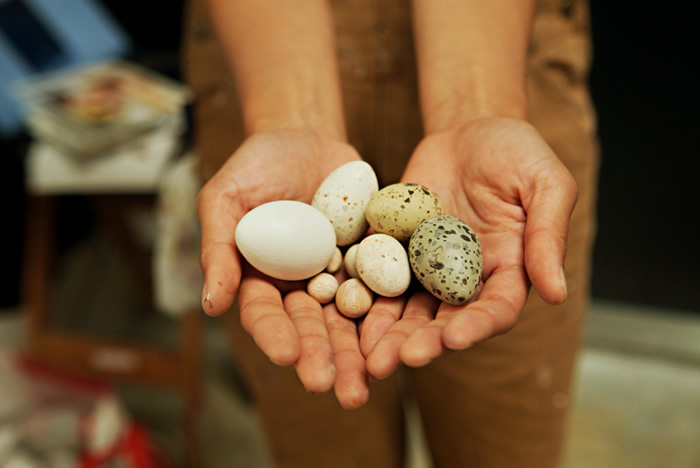
I’ve read that you’ve had a fierce love of animals for a long time. How do you feel about invasive animal species? Are they easy to draw? You know… I still love all of ëem. Thereís no intention behind the action of these animals. Thatís how they survive. I definitely struggle with that same thing ñthe invasive, native and non-native issue. In California, eucalyptus trees are non-native. But theyíre everywhere. Theyíre literally a part of California now. I love eucalyptus. The way they look the way they smell the way they feel, everything about them. And then knowing that they were introducedÖ At one point I wondered, thereís gotta be a statute of limitations —theyíve been here so long everything has adapted to them, they might as well now be considered native.
Well now thatís a really interesting point. That reminds me of the Southeast, Georgia, North Florida the Kudzu plant. Right. Absolutely. Thatís how I think of it. When I hear of Kudzu I think, ìOh yeah, the Southî There are times when an invasive species is quite detrimental to the natural Eco-system. Lion fish are incredibly invasive and there are a lot of efforts to get rid of them. I understand that. Thatís something that is necessary but it doesnít make me dislike the lion fish. I love lionfish. I think theyíre gorgeous.
The lionfish is a beautiful animal. —really distinctive markings and fins and yet so problematic in the wrong habitat.
[In our conversation we talked about introduced monk parakeets thriving in the New York City area] Thereís gotta be some kind of a middle ground. Itís a tricky subject. I think something like these parakeets you mentioned is kind of an interesting example. They escaped from JFK, theyíre not doing anything harmful. Theyíre just there and so… Theyíre the new neighbors. We brought ’em and they moved in. Thatís just that. I think people like to remove themselves from the cause and effect of life. A lot of these species are here because of us and we need to be accountable for that. We changed the landscape. We changed what happened. Even in some place like Lake Tahoe they are very particular about their lake and not having anything come and infest it. Youíre not even allowed to bring a kayak thatís been in another lake or river because there could still be material or bacteria on the bottom that defiles this pristine lake. ñYou know what I mean? But it’s phenomenally challenging. I think our motivation is to make life convenient. And so to lose convenience for the sake of maintaining a pristine historic landscape it’s challenging.
Let’s talk about one of your latest projects, the mural at the Cornell Ornithology Lab in Ithaca, New York. [I show Jane a picture of the lab, from the Internet] I am absolutely honored to be the artist for this new project. The new ornithology lab in Ithaca was erected in 2006, I believe. It’s not that long since it’s been up. At the lab there is this massive wall. You can see it from the balcony at the front of the building. On that wall will be a mural about the evolution of birds. It will date back 400 million years ago and will go through dinosaurs relevant to avian lineage and end with modern birds. Thereís gonna be about 300 species of birds and prehistoric animals represented. It’s never been depicted. It’s never been painted, certainly not to that scale.
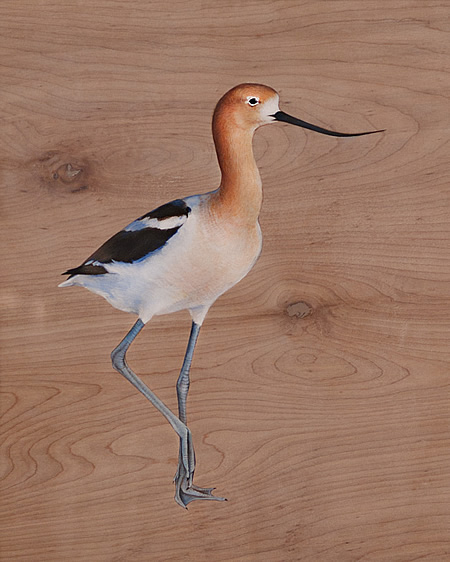
Becuz… we’re experts!
Thatís incredible. Will you get to choose the birds? No. Definitely not. This is something that the lab and the ornithologists will choose. Basically they submit a species list and we go through a round of preliminary drawings, sketches and mural composition. That process will actually take about a year. Itíll be a year to do all the preliminary work and then another year to paint the actual mural. I just started in May. Thatís about a two year project. And thatís fast. So I’ll definitely have a full time assistant for this project. It’s a pretty ambitious to get all of these drawings done in a year.
Just hearing you talk about itÖ really intense. Also your audience, theyíre no joke. You talked about realism and accuracy, your audience will really scrutinize the work. Yeah, they do just that. They scrutinize. Theyíll say, the bill is too broad; the curvature is too steep; the head shape is a little off here —the legs are too long; they’re not thick enough the toe is too long. Because they know there subject so stinkiní wellÖ it’s crazy. Ornithologists out of any other animal scientists rely so much on their skills of observation. Experts can spot a bird in flight and theyíll have seen it for a second and they can say, ìOh that was this bird.î They are phenomenal with their skills of observation. I love being schooled by them in fact. One of my favorite parts of the process is giving them my drawings and thinking, ìOh god, Here we go!î Itís a really neat process I mean you learn so much working with these guys. It’s such an honor to be painting in this world renowned ornithology lab. Iím still blown away by it. —a little bit speechless.
What was one of the scariest (I didn’t sign up for this ) moments as an artist? I’ve been lucky enough to have a job that allows me to enjoy my work. But just because I’m enjoying some success from it does not mean I lived this rich cushiony life. Everything I have, I’ve worked hard for. My parents were both immigrants and struggled hard to help me get an education. I love what I do but that doesn’t make it easy. It’s really challenging when people see you and just assume that because you’re doing art and something you love that you’ve lived a privileged and easy life. I love animals and I love the work that I do… that is my job. But just like any job, it gets hard at times. Sometimes, the biggest scariest place is not knowing not knowing if this is making an impact. All the other types of scary moments are really just moments. They happen and then, POOF! —but this is an ongoing thing. It’s how I choose to make my living but it’s also a cause and something really important to me. What I do, intellectually and spiritually in that perspective, I have no inhibitions or fear. But we live in a world where we have to survive. I have my moments, my doubts and sleepless nights but this is what I do. What I have to do.
That was one of the last questions I asked Jane. I was expecting this ardent animal lover to talk about close encounters with a bear or a diamondback rattlesnake. Her answer caught me off guard. Sometimes I forget why I created NativeBergen, but honestly, answers like that tell me, so clearly, that this is good.
At one point, I asked Jane Kim if she had any plans to do any work that involved people. She told she might consider rendering the human brain —possibly, maybe. I replied to her that what I meant was artwork that showed people in a social light. You know, portraits, repose, human drama…. She told me that nobody ever asked her that before. It was the end of our interview; we were on the phone for more than an hour. She was probably tired of my lily-brown ass and I was emotionally spent, as well. And yet, she very quickly detailed to me why she loves animals so much and hasn’t delved into humans:
One of the challenges of our generation and culture is that we forget that we’re a part of nature and the ecosystem. We have all this technology and live in buildings and big cities. So we easily forget the natural world. I’d like to advocate for the natural world; to be a voice for it. The human part of the natural world already has a ton of voices for it. That voice doesn’t really need my help.
Ironically, for someone that is a meh on painting humans and the human condition her artwork and personality make her and her causes refreshingly accessible and palatable to the human animal. Jane Kim exemplifies an environmentalism and artistry that is both charismatic and genuine.
—a must-have for NativeBergen.
A very special thanks to Jane Kim for her time and for answering our questions. Visit her site, Inkdwell and purchase her art on Art.com
*All photos and masthead background courtesy of Kelly Hsiao. All artwork copyright Jane Kim. All photography and artwork used with permission. All rights reserved.
July 24, 2013Posted in PEOPLETags: animals, artist, environment, science illustrator 4 Comments

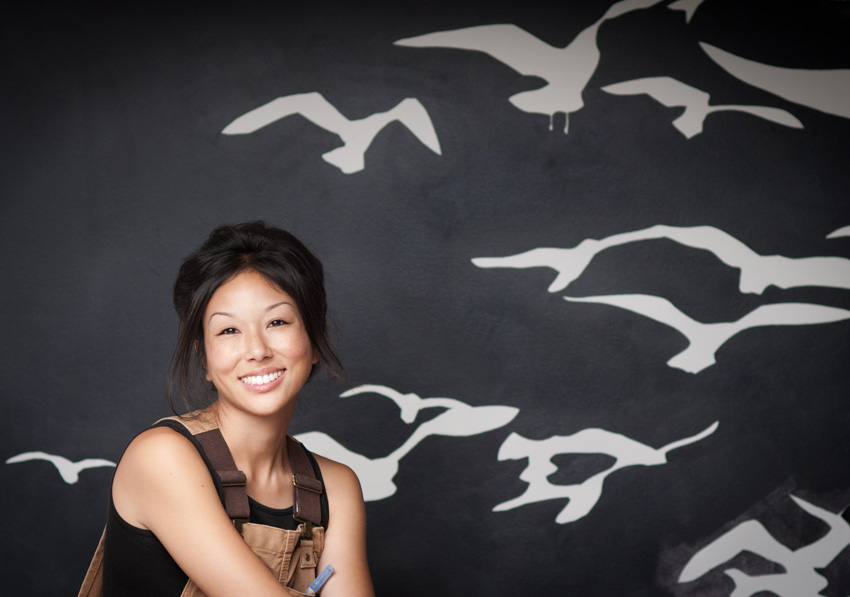
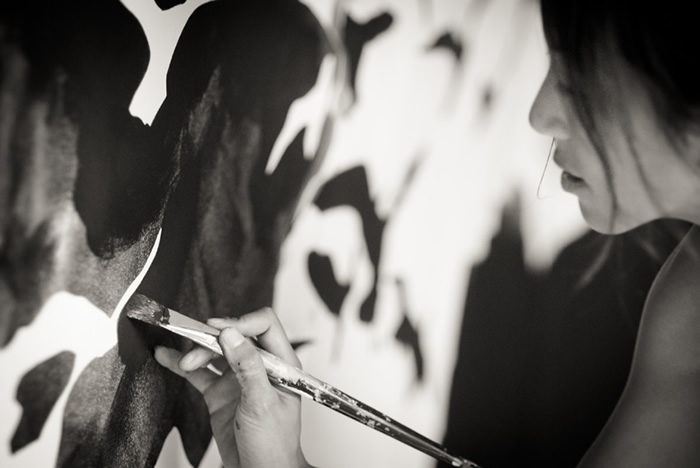
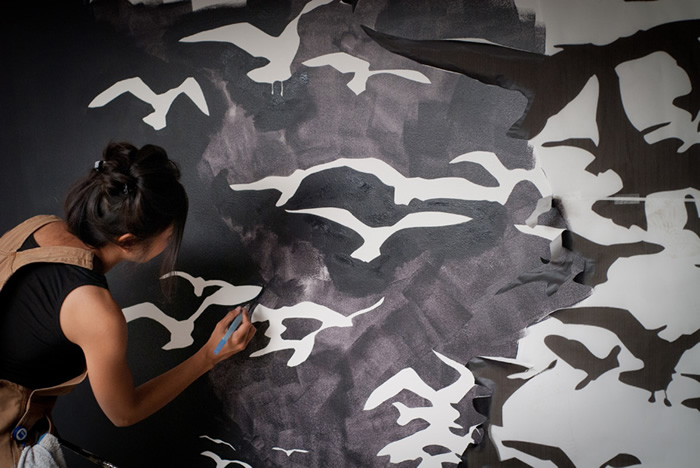
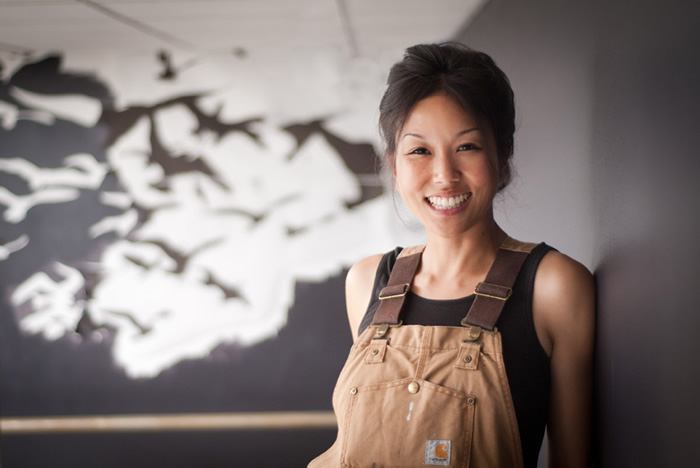
4 Comments
I love the shot of Jane Kim's hands (holding the painted bird eggs)… those are working hands!! Theresa Trapp July 25, 2013 at 10:40 am
Great article. I'd love to see this woman's work based on this interview! David Kukla July 30, 2013 at 7:49 pm
Hi Dave, We had a ton of material but clipped it down … You know, —always leave them wanting more. However, I'll find out from Jane & Kelly if there's a link to the finished work.
All the best, brother! óNativeBergen July 30, 2013 at 9:21 pm
Okay, so I'm not crazy. Maybe a bit senile. There is a list of woody plants available for the CF. I can't remember why I didn't link to this page directly. However I have updated the post so that I'm not doling out bad information anymore. Thank you so much for your comment. Apologies for this omission. Ron Evans óNativeBergen October 3, 2013 at 1:40 pm